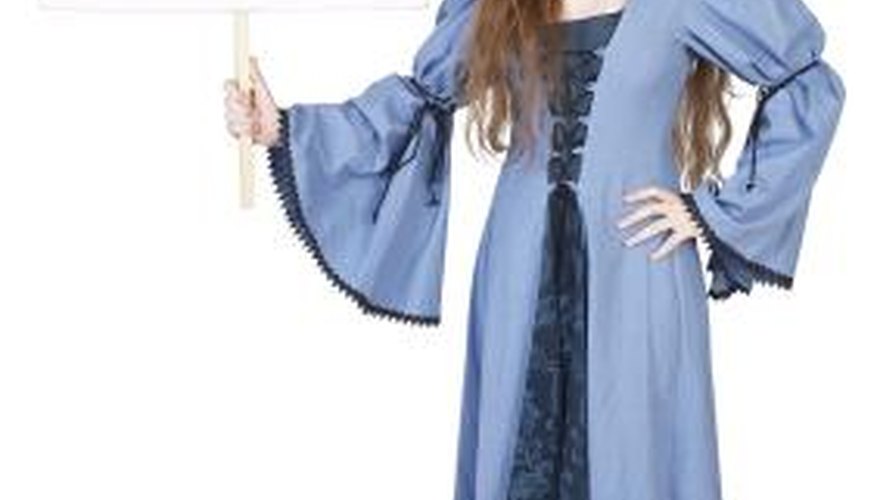The Renaissance period began in the 1400s when clothing was a "status symbol." Women's hairstyles included the use of hair accessories and long braided styles. Young men typically wore their hair long down to their ears, and even to their shoulders.
Men's Hairstyles
Older men typically had shorter hairstyles than younger men during the 1400s, and while most had beards and moustaches, some older men opted to shave. Men's hairstyles included a bob cut. The bobbed look could be straight or curly. Young men wore longer styles as long as down to their shoulders. The men often wore low-crowned, brimmed caps that were turned up on just one side or all around. As the Renaissance period progressed, men's hairs styles became shorter.
- Older men typically had shorter hairstyles than younger men during the 1400s, and while most had beards and moustaches, some older men opted to shave.
- Young men wore longer styles as long as down to their shoulders.
Women's Hair Accessories
Renaissance hairstyles built on Greek and Roman hairdos by adding embellishments. Women in the 1400s basically decorated their hair with items including pearls, veils, ribbons and precious gems. Braiding the hair was popular, and the women would typically form a braided crown around the top of their head. In the 1400s, the well-known theoretician, Machiavelli, introduced the standard for women's hairstyles stating that women wear their hair loose, blond, long, and in long curls to their shoulders. Subsequently, during the Renaissance period, women often dyed their hair, especially into lighter colours such as blonde and golden hues.
- Renaissance hairstyles built on Greek and Roman hairdos by adding embellishments.
- In the 1400s, the well-known theoretician, Machiavelli, introduced the standard for women's hairstyles stating that women wear their hair loose, blond, long, and in long curls to their shoulders.
Women's Hairstyles
A "caul" or "snood" was a fancy hair net worn over a bun. A "circlet" was similar to a necklace and positioned around the forehead; a circlet was made of ribbons or gems. Italian "hair taping" was another hairstyle in the 1400s. It involved twisting hair up to be worn above the shoulders. A "reverse half bun" was created by splitting hair in half, front to back, with the front worn down and the back worn up in a bun.
- A "caul" or "snood" was a fancy hair net worn over a bun.
Create Your Own 1400s Hairstyle
Whether you are acting in a play set in the 1400s or attending a costume party, create your own Renaissance hairstyle by pulling your hair back from your temples making one thick plain braid down the centre of the back of your head. Decorate the braided part with pearls or other embellishments. For the perfect braid, comb your hair with your hand as you braid. Thread a strand of gold decorative cord or ribbon through your braid.
- Whether you are acting in a play set in the 1400s or attending a costume party, create your own Renaissance hairstyle by pulling your hair back from your temples making one thick plain braid down the centre of the back of your head.
